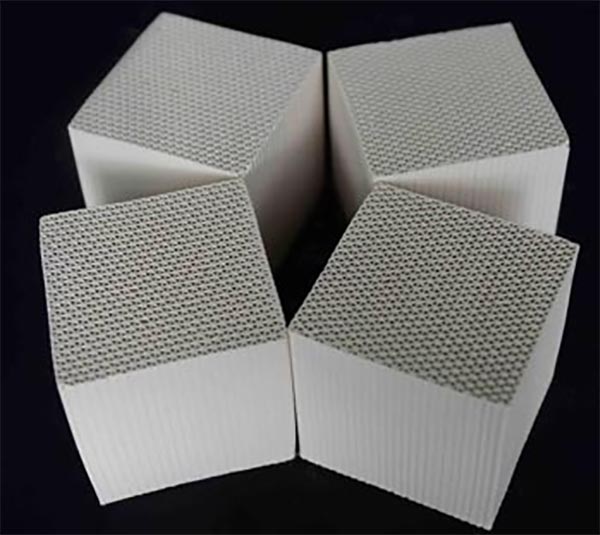
Honeycomb zeolite molecular sieve Its main material is natural zeolite, which is composed of SiO2 Inorganic microporous material composed of Al2O3 and alkaline metal or alkaline earth metal, with inner pore volume accounting for 40-50% of the total volume and specific surface area of 300-1000 m2/g, has the characteristics of high temperature resistance, non flammability, good thermal stability and hydrothermal stability. It is an efficient molecular sieve carrier with good adsorption performance, no secondary pollution, and can be regenerated at high temperature, which is better than similar carriers Activated carbon The efficiency is increased by 40%, which is widely used in the fields of adsorption, separation, catalysis and environment, and is more suitable for the treatment of organic waste gas with large air volume and low concentration. The adsorption material has a stable ozone decomposition ability, which significantly improves the decomposition efficiency of VOCs. The adsorption material first forms a special structural effect through the combination design of silver and manganese, which can decompose ozone into active oxygen atoms, and then react with VOCs molecules to form carbon dioxide and water.
Zeolite molecular sieve Application of
Zeolite molecular sieve is a kind of catalyst with excellent performance because of its complex structure and unique pore system. ZSM-5 and Y zeolite were used together in FCC reaction to obtain high yields of gasoline, propylene and butene. MCM-22 zeolite molecular sieve has significant advantages in alkylation reaction. For example, as a liquid phase alkylation catalyst, MCM-22 catalyzes the reaction of benzene and ethylene to produce ethylbenzene, which not only improves the selectivity of ethylbenzene, but also has high stability and low dosage, which can be regenerated in situ in the reactor, while other kinds of catalysts must be taken out of the reactor for regeneration. In the synthesis of short chain alkyl substituted aromatics, MCM-56 has better activity and is not easy to inactivate. ZSM-22 is used as a catalyst in many processes, but it is mainly used for butene skeleton isomerization and n-heptane isomerization.
In recent years, zeolite molecular sieves have been widely used in adsorption separation, catalysis and other fields due to their unique structure and performance. However, it still has great research significance, and many scholars are still committed to the research of zeolite molecular sieves. In short, zeolite molecular sieves have and continue to change the chemical industry and human life.


